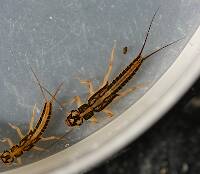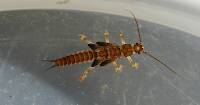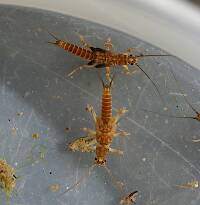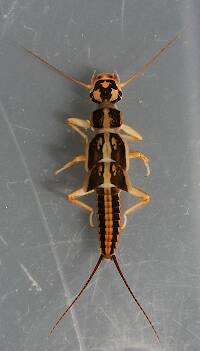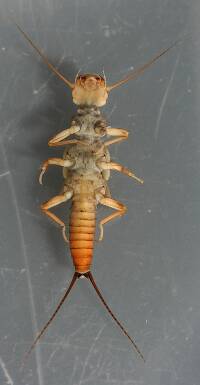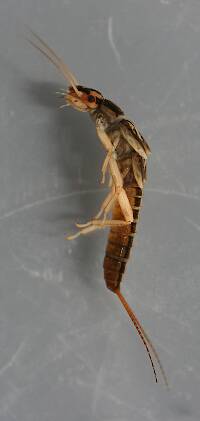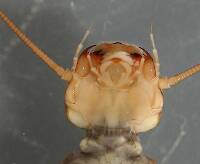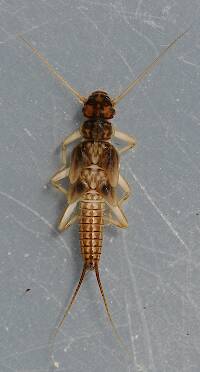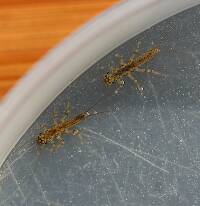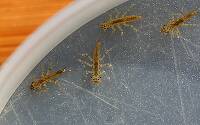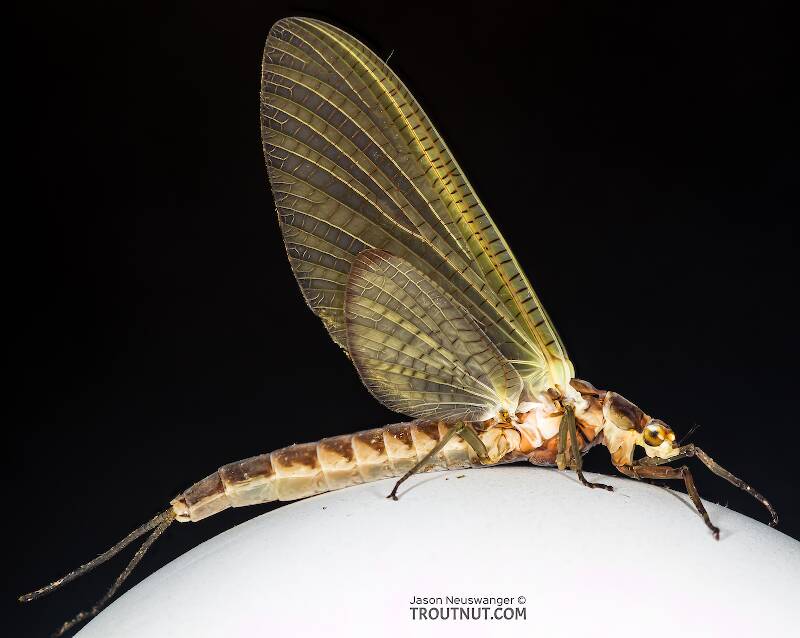
Hex Mayflies
Hexagenia limbata
The famous nocturnal Hex hatch of the Midwest (and a few other lucky locations) stirs to the surface mythically large brown trout that only touch streamers for the rest of the year.
Featured on the forum

I was not fishing, but happened to be at an unrelated social event on a hill above this tiny creek (which I never even saw) when this stonefly flew by me. I assume it came from there. Some key characteristics are tricky to follow, but process of elimination ultimately led me to Sweltsa borealis. It is reassuringly similar to this specimen posted by Bob Newell years ago. It is also so strikingly similar to this nymph from the same river system that I'm comfortable identifying that nymph from this adult. I was especially pleased with the closeup photo of four mites parasitizing this one.

Troutnut is a project started in 2003 by salmonid ecologist Jason "Troutnut" Neuswanger to help anglers and
fly tyers unabashedly embrace the entomological side of the sport. Learn more about Troutnut or
support the project for an enhanced experience here.

Several stoneflies of this species were flying around a small stream last night. I tied on a brown drake imitation of about the right size/color to approximate these stones, and was rewarded with a hard-fighting 17-inch brown trout.
GONZO on Jun 12, 2008June 12th, 2008, 3:25 pm EDT
Teamrenna,
Your comments confused me at first, until I realized that your perspective seems to be from a different part of the world. Neither Siphonoperla burmeisteri nor Xanthoperla apicalis is found in North America. (This specimen was collected from a small stream in New York, USA.)
Perhaps that is true where you live, but some North American Isoperla are well within the size range indicated by the photo (+/-14mm from head to wingtips). As best I can sort it out, everything appears to be consistent with a perlodid ID. What structures do you see that suggest Chloroperlidae?
Your comments confused me at first, until I realized that your perspective seems to be from a different part of the world. Neither Siphonoperla burmeisteri nor Xanthoperla apicalis is found in North America. (This specimen was collected from a small stream in New York, USA.)
...all Isoperla species are much bigger....
Perhaps that is true where you live, but some North American Isoperla are well within the size range indicated by the photo (+/-14mm from head to wingtips). As best I can sort it out, everything appears to be consistent with a perlodid ID. What structures do you see that suggest Chloroperlidae?
Teamrenna
Posts: 2
Posts: 2
Teamrenna on Sep 4, 2008September 4th, 2008, 9:00 am EDT
My bad Gonzo. I concluded to fast. Its of course a female Isoperla. I must have been blind or something when i posted my first comment.
Pay attention to the slight notch in this specimens subgenital plate (posterior, as seen in one of the pohots. What does your taxonomic keys say?
In my region (Norway),adult isoperla (grammatica, obscura and difformis) females can be separated by this feature.
This specimen has a difformis-like subgenital plate by the way.
Pay attention to the slight notch in this specimens subgenital plate (posterior, as seen in one of the pohots. What does your taxonomic keys say?
In my region (Norway),adult isoperla (grammatica, obscura and difformis) females can be separated by this feature.
This specimen has a difformis-like subgenital plate by the way.
GONZO on Sep 9, 2008September 9th, 2008, 9:32 am EDT
My bad Gonzo.
Not a problem, Teamrenna. I always enjoy hearing from fly fishers and aquatic insect enthusiasts from other parts of the world. (And I dream of visiting your stunningly beautiful country some day!)
What does your taxonomic keys say?
I wish it were that easy. Unfortunately, if a comprehensive species-level key to all stages/sexes of North American Isoperla exists, I'm not aware of it. Many of the existing keys are either out of date or lead to a statement that says that females must be associated with males for identification. Part of the problem is that we have nearly 60 North American species assigned to this genus, and some adults are described mostly by distinctions in male genitalia. There are about 19 Isoperla species in my home state of Pennsylvania, with a few unnamed as yet.
In general appearance, this specimen looks much like Isoperla cotta. However, given the number of similar-looking species and the degree of variation among them, I still wouldn't hazard a guess about the species. Incomplete distribution records further compound our identification problems. For example, Isoperla cotta is not listed in the distribution records that I have seen for New York State, but I know that specimens identified and photographed by Dr. Whitney Cranshaw were collected there.
Best,
Lloyd (Gonzo)
Quick Reply
Related Discussions
Topic
Replies
Last Reply
0
Feb 21, 2018
by Millcreek
by Millcreek
0
May 3, 2007
by Troutnut
by Troutnut
2
Nov 28, 2012
by Brookyman
by Brookyman
8
Jun 5, 2007
by Dinerobyn
by Dinerobyn


